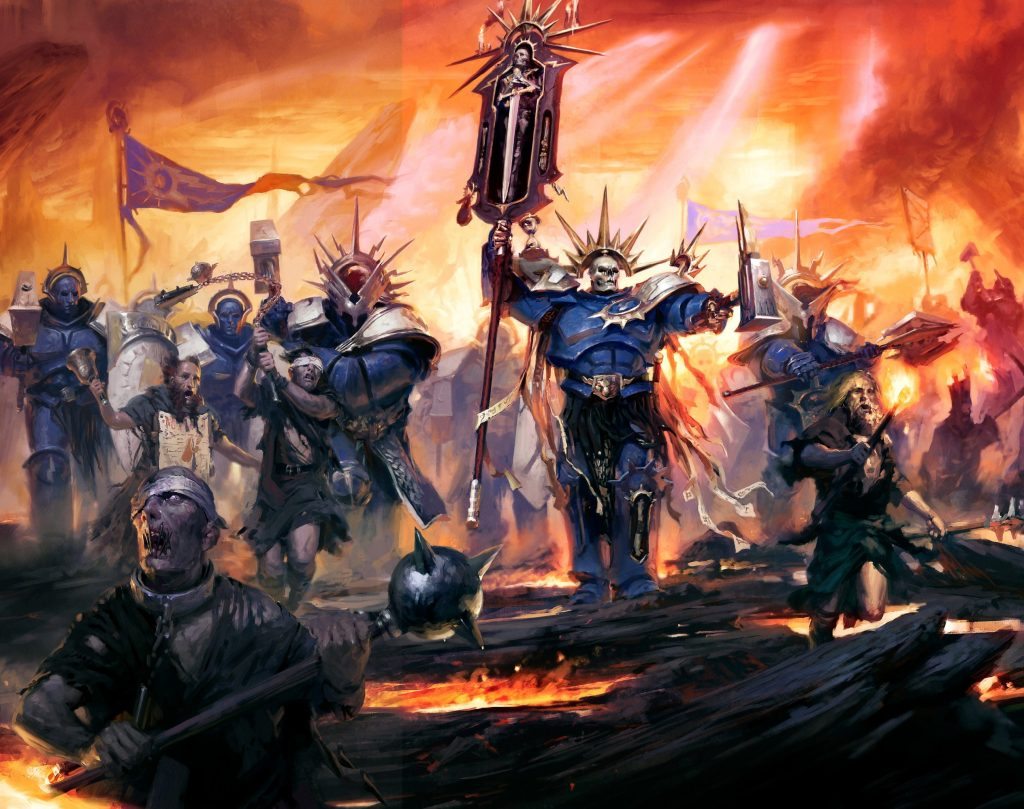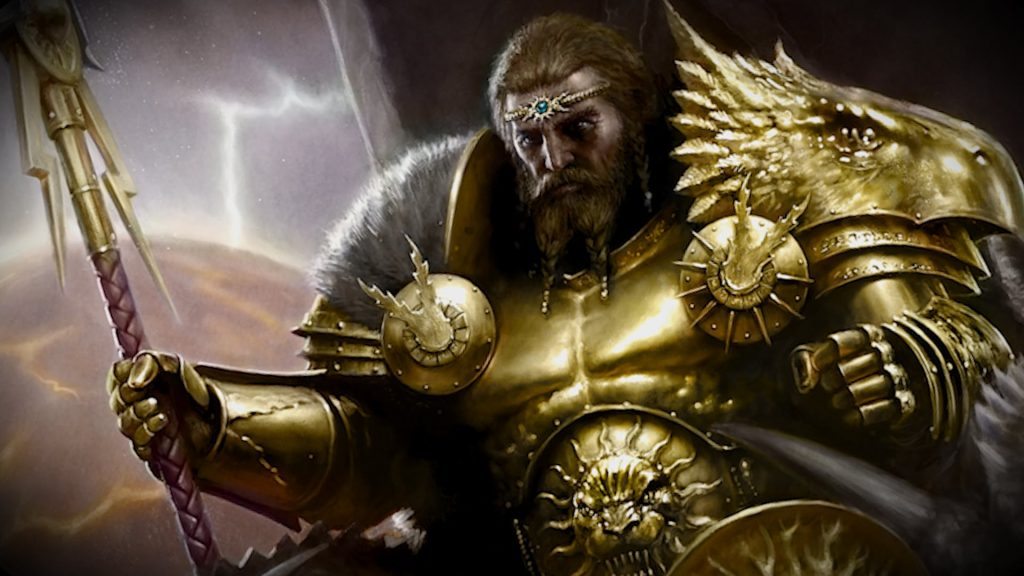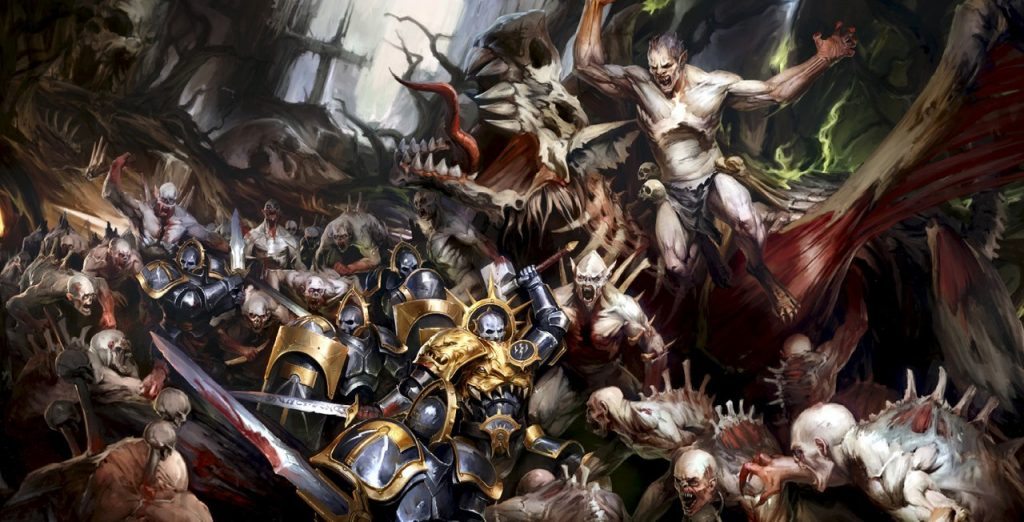With the 40k ITC season being pretty much over for me (unfortunately I can’t make it to LVO) I have started to give some games I typically do not play a try. One friend from my gaming group has been singing the praises of Age of Sigmar all year. He finally convinced me to play a full game of it with the Kruleboyz models I had collected but never had any intention to play many games with. I was a huge fan of the Old World and Warhammer Fantasy. It is the first miniature wargame I got into as a kid, and I still don’t see why Games Workshop yanked the rug out from under the Old World to create Age of Sigmar. Like many people, the way the transition from the Old World to Age of Sigmar was handled by Games Workshop really gave me negative feelings about the newer game. Even though the rough transition happened years ago now I still had jokes about AoS (without ever really playing a game of it), but I could not have been more wrong. I finally played my first game of Age of Sigmar this week, and I was shocked at how fun, immersive and interactive the game has become.
AoS Keeps You Interested:
Through the use of Heroic Actions, Monstrous Actions and Command Abilities AoS gives a player things to do even when it is not their turn. The biggest gripe I have with 40k is when it is my opponents turn all I am doing is sitting there and rolling a few dice. This isn’t the case in AoS. Right from the start of your opponent’s Hero Phase you get to interact with the game by picking a Heroic Action that could get you additional Command Points to use that Turn or healing up a wounded Character (healing one of MY models during my opponents turn seemed wild to me after so many years of 40k).
The interactive-ness of AoS doesn’t stop after your opponent’s Hero Phase either. During your opponent’s movement phase you will have a serious tactical choice to make on if and when you want to redeploy one of your units D6 inches through the use of a Command Ability. After the first time my opponent used this out of turn movement to pile more of his Stormcast Eternals onto an objective that was (previously) held by my Hobgrots I understood the power of this Command Ability. Throughout the game I saw this one game mechanic of movement during your opponent’s turn be used to make a charge longer, steal objectives and move block a monster from a potentially game winning charge. I could write an entire article about how to use the Redeploy Command Ability.
Mission Scoring:
The scoring system in AoS was also a refreshing change from 40k. There was still the hold one, hold 2, hold more objectives “primary” scoring, but the “secondary” scoring came in the form of Battle Tactics that are chosen at the start of each of your player turns. Again, an entire article could be dedicated to how an army list can be designed to complete these Battle Tactics effectively, the strategic mini-game of picking the right Battle Tactic for the right turn or how to deny your opponent their Battle Tactics. This innovative scoring system always made me feel like there was something I could be doing in my game to score points. I was soundly beaten during my first game of AoS, but it never felt that way until the end of the game.
Grand Strategies are also an interesting addition to AoS that add another layer at strategy to the game. Trying to figure out how to complete your Grand Strategy is fun, but the real fun comes when you are playing the game to stop your opponent’s Grand Strategy. Is it better to just let them have the 3 points? Can I be sure I will get my Grand Strategy points if I let them have theirs? What cost will these decisions have on my ability to complete Battle Tactics or hold objectives? I asked myself all of these questions throughout my entire AoS game, and it was exciting to realize that the answer kept changing depending on the board state.
Incentive to Play:
While I have felt for some time that the 40k missions give little incentive for players to interact with their opponents army on the battlefield, the AoS scoring system encourages the player’s armies to interact throughout the entire game. There are very few “free” points in AoS like in Warhammer 40k. There are no Engage on All Fronts or RODs in AoS that will score you constant points throughout the game. Sure, you can take the Battle Tactic to advance 3 units and end within 3 inches of each other for one turn, but that will only get you 2 points. You better have a plan for the other 4 turns of the game that doesn’t involve hiding in a ruin and scoring passive points.
The Dreaded Double Turn:
The double turn system in AoS was probably the single factor that kept me from playing the game. I thought any game where my opponent just randomly gets back to back attempts to take my army off the table cannot be fun. Like with many things in my life, I was wrong about this as well.
First, just rolling for the double turn was exciting each time. Knowing that, if I won priority, I could swing the game around in my favor at almost any time gave the game a sense of purpose even when my little swamp Orruks (Orks?) were being massacred. Obviously, this could easily go the other way with the player who is winning getting a double turn, but AoS has some rules in place to help mitigate this.
The second player on the third turn gets to remove an Objective from the battlefield. This seemed like an excellent way to really make players think if they wanted to take that double turn or not. You may be able to go twice, but this isn’t 40k. You may kill an extra unit, but it may be at the cost of losing out on points with that objective your opponent is going to take away from you.
Overall I am excited to get more games of AoS played in the future, and I am surprised I had so much fun in a game that once had a rule where the player with the longest beard got to do something on the tabletop (seriously). If you have been shying away from AoS like I was for so long now is the time to give it a try!




